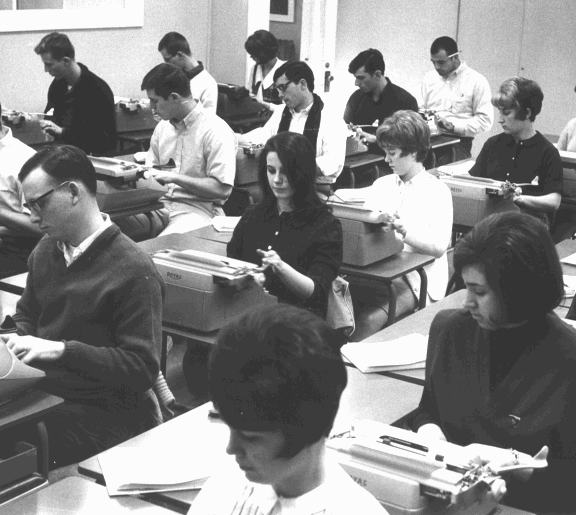In “WPA Work at the Small College or University,” Amorose (2000) points out that the small-school program administrator is at a unique advantage as “composition’s symbolic authority” on campus. This authority is due in part because “writing instruction is often so enmeshed in the small school’s self-enacting discourse—from its marketing and admissions materials to its claims of ‘certifying’ graduates as ‘writing-proficient’--that its sacredness as part of the institution’s mission is unquestioned” (p. 94). At The University of Findlay (UF) specifically, I have also found this to be true. Nearly all programs support writing instruction by enforcing writing requirements, accepting placement decisions from the Director of Writing, and taking a proactive approach to strengthening their students’ writing skills within the major by performing self-studies.
UF is also supportive when it comes to increased technology use on campus, which makes it somewhat unusual among LACs. Nancy Millichap, Director of the Midwest Instructional Technology Center, notes that smaller colleges often view technology more suspiciously than large universities, and the smaller numbers of students and faculty make some expensive technologies hard to justify (Jorgenson, 2004, p. 5). While UF does have a smaller instructional technology staff, it also has a second “academic technology staff” who support and study faculty integration of technology including whiteboards, podcasting, and digital filmmaking through the Teaching, Learning, and Technology Center. As a result, faculty who want to use Web 2.0 technologies ranging from Flickr to blogs to Google Docs benefit from both technological and theoretical institutional support.
Students similarly have extensive up-to-date programs and resources, including a counterpart Student Technology Center to help with digital films, podcasts, and webpages. While UF does not have the space to house every composition course in a computer lab full time, there are several laptop sections and some courses taught in labs. Courses taught in traditional classrooms have access to a lab that can be reserved weekly. The dual benefit of available computer access combined with a technology- and writing-receptive faculty have made implementation of the Multimodal Composition Initiative a relatively smooth process.
The Multimodal Composition Initiative at The University of Findlay
As a newly appointed Director of Writing, I envisioned a writing program where first-year composition courses could have the same standard writing requirements but instructor choice as to how to implement them. In theory, this meant that instructors could choose to incorporate multimodal assignments as long as the basic requirements were met.
Still, because print papers remain the primary currency in other courses at UF, I was not seeking to eliminate print papers with The Multimodal Composition Initiative in lieu of digital compositions. To better fit multimodality within the campus culture, one of three major assignments within the College Writing II course could incorporate multimodality using Web 2.0 technologies.
This flexible approach seemed logical since only six of the 16 full time and adjunct faculty who teach composition courses each semester initially had the necessary technology skills to implement a multimodal assignment using Web 2.0 technologies such as podcasting and blogging.
The following Multimodal Composition Initiative was informally drafted during two meetings of first-year composition faculty in the fall of 2008 and after a visit to The Ohio State University to interview Scott DeWitt, Director of OSU’s First-Year Writing Program. DeWitt revamped OSU’s program to incorporate multimodality, and writing faculty member Christine Denecker and I interviewed him regarding his implementation process to get ideas for our own Multimodal Composition Initiative. While we would have liked to visit a liberal arts college as well, very little research exists on liberal arts programs implementing multimodality into first-year composition. Descriptions of phases for our initiative follow.
